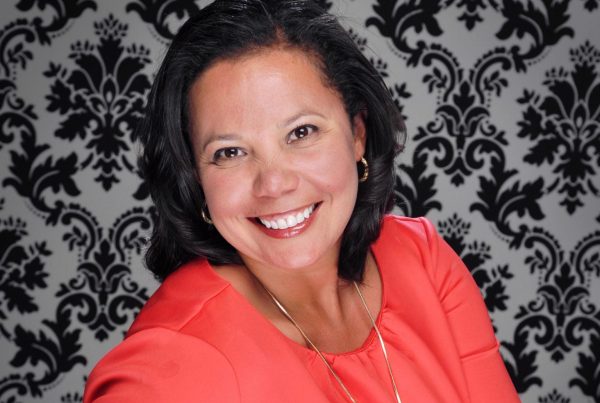
The need to change and radically transform the way nursing is taught has been recognized by many nursing authorities over the past 20 years.
The most recent shot across the bow was sounded in 2010 in the book Educating Nurses: A Call for Radical Transformation with lead author Patricia Benner.
Though some things have changed, based on a recent survey of my audience, one ongoing barrier to realize this needed transformation is the unwillingness of some faculty to do things differently.
I believe that the time for the status quo in nursing education is no longer tenable and for those who recognize the need to change, it is now time to rock the boat!
Ironically, the respondents to my survey and some of the findings of Educating Nurses supported the following ongoing problems in nursing education that adversely impact student learning and mastery of nursing practice:
- Content heavy curriculum
- Curriculum that emphasizes passing the NCLEX®
- Curriculum that does not teach students real-world practice or emphasize the nurse thinking of clinical reasoning
Cost of the Status Quo
What’s at stake if we don’t do things differently in nursing education and just keep doing what we’ve always done?
Think of each of these current problems as dominos that impact the other because they have a direct relationship to one another if the status quo persists:
- Student’s not prepared for real-world clinical practice
- New graduates who experience a more difficult and painful transition to real world practice that can lead to them leaving the profession altogether
- Because of an inability to clinically reason by recognizing an early change in patient status, adverse outcomes and even needless patient deaths can occur as a result of failure to rescue (Clarke & Aiken, 2003)
The Primary Objective of Nursing Education
Nursing is a PRACTICE based profession. Therefore…
the primary purpose of each nurse educator is to do your very best to PREPARE students for real-world clinical practice.
EVERYTHING that is done in your classroom or clinical must directly relate to this objective or it is contributing to the ongoing education-practice gap that not only affects student learning but can even result in the loss of human life through students who are now new nurses who fail to rescue!
The Way Out of the Wilderness
There is a better way.
It is evidence based education practice derived from the Carnegie Foundation’s research contained in Educating Nurses.
It can be summed up in three simple steps:
- Contextualize textbook content to bedside practice
- Integrate clinical realities into the classroom…bring clinical to class
- Emphasize and integrate clinical reasoning (Benner, Sutphen, Leonard, & Day, 2010)
My Story
As a new nurse educator who had over 25 years of clinical experience and remained current in practice, I experienced the education-practice gap first hand. I assumed that lectures that emphasized textbook content and lengthy written care plans were normative and expected based on what I observed of my colleagues.
But something deep down within me was not satisfied. I went into nursing education to pursue my passion to teach, and what I was experiencing and the student response to these approaches was slowly robbing me of my joy and passion.
There had to be a better way!
I Saw the Light!
Over a long winter break in 2011, I began to read the newly released book Educating Nurses: A Call for Radical Transformation. This book opened my eyes and put words to the discontent I was feeling and experiencing and showed a better and more effective way to teach nursing.
I was determined to be the needed change and became an early adopter of these common sense recommendations and took responsibility for my content that Spring semester.
As a result, I cut my content heavy lectures in half, created an application case study for each lecture using a salient scenario to contextualize my content and integrated clinical reasoning and how I approach the thinking in the clinical setting.
My students came to class prepared, expected to have read the textbook and bring their student version of the case study to class prepared to discuss as we worked through it together as a class.
Unexpected Results
Though my students were no longer “spoon fed” content and had to work to apply their learning, something began to shift.
Though some students were antagonistic and resistant to this transformational change, I stayed the course, and by mid-semester the entire class began to see the relevance to this new approach and how it helped them to put the scenario together and think like a nurse.
At the end of the semester when I conducted a student survey, NOT ONE student said to go back to a traditional textbook lecture, but continue utilizing this active learning approach.
One student summed up the essence of her class when she commented:
“I didn’t feel like I was memorizing for the test. I felt like I was able to apply the information. It helped put knowledge into practice and made it clear why it was relevant.”
This Can Be Your Story!
I share my story to encourage you that my experience, can also be your lived experience if you are willing to not only do things differently, but use the recommendations from Educating Nurses to guide you in your journey.
My strength as a nurse educator is to take that which is theoretical and bring it to the student level, break it down, and make it practical using my lens of current clinical practice to keep it relevant.
I have been blessed to share my applied strategies to teach the art of nursing, nursing content, as well as clinical reasoning at conferences and workshops across the country the past three years. Nurse educators across the country have been able to replicate my transformational results in their program as well.(testimonials are on my website homepage)
Be the Needed Change!
In a recent survey of my audience, the top struggles of students in the clinical setting as well as the most common weakness in the curriculum that is adversely impacting student’s ability to transition successfully to clinical practice after graduation were identified.
In upcoming blogs I will share practical strategies to transform classroom and clinical learning, principles to guide students to successfully transition to clinical practice, as well as a new student resource that will soon be available.
Change is needed and every educator has the ability to be the needed spark to make a blazing fire of transformation possible.
Partner with others who recognize the need to change. Take a small step to bring needed change to your program this semester. Develop a sense of urgency. The time is now.
What do you think?
From your vantage point, what are the obstacles that you are experiencing in your department to bring needed change and what have you done to overcome them?
Comment below and let the conversation begin!
References
- Benner, P., Sutphen, M., Leonard, V., & Day, L. (2010). Educating nurses: A call for radical transformation. San Francisco, CA: Jossey-Bass.
- Clarke, S.P. & Aiken, L.H. (2003). Failure to rescue. American Journal of Nursing, 103, 42-47.
Keith Rischer – Ph.D., RN, CCRN, CEN
As a nurse with over 35 years of experience who remained in practice as an educator, I’ve witnessed the gap between how nursing is taught and how it is practiced, and I decided to do something about it! Read more…
The Ultimate Solution to Develop Clinical Judgment Skills
KeithRN’s Think Like a Nurse Membership
Access exclusive active learning resources for faculty and students, including KeithRN Case Studies, making it your go-to resource.



